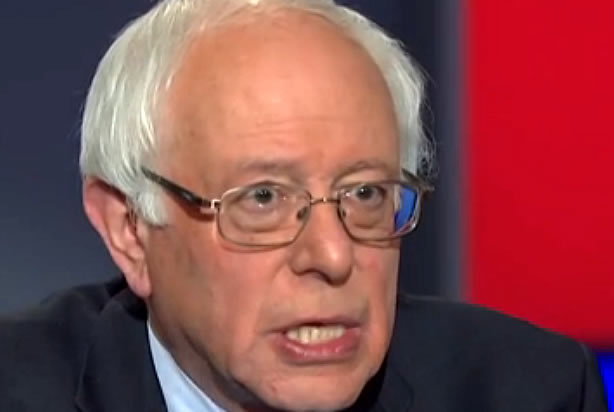 Hillary Clinton’s worst nightmare may be coming true in Iowa and New Hampshire.
Hillary Clinton’s worst nightmare may be coming true in Iowa and New Hampshire.
According to a series of new polls, Clinton’s months-long lead in first-in-the-nation-voting Iowa has sunk to the outskirts of the margin of error, signaling that her campaign is approaching a statistical tie with Bernie Sanders.
Meanwhile, in New Hampshire, the next contest, Sanders has mantained his lead (50 percent to 46 percent) in the latest polls, which also find he would do better than she would in hypothetical matchups against various Republican presidential competitors, because he appeals more to independents.
Then, looking at Nevada, the next state in 2016’s opening contests, Clinton isseen as no longer having an invincible lead, according to media reports. But she is firmly in the lead in the fourth state before March’s multi-state voting begins. In South Carolina, Clinton is averaging 69 percent to his 28 percent, although Sanders campaigned there this weekend and has visited more than she has.
While the dozen states that will vote on Super Tuesday, March 1, have many more Democratic Party delegates (1,007) at stake than in Iowa (52), New Hampshire (32), Nevada (43) and South Carolina (59), the growing prospect of a Sanders surge during much of the first month of the 2016 nominating season undoubtedly has disconcerting echoes for the Clinton campaign.
Take Iowa. Until last week’s poll by the Wall Street Journal/NBC/Marist, Clinton had been ahead by an average of 12.8 percent since mid-December, according to RealClearPolitics.com. But the WSJ/NBC/Marist poll released Friday found that Clinton had 48 percent, Sanders 45 percent and Martin O’Malley 5 percent. Beyond those tightening numbers, the Clinton campaign knows all too well what happened in 2008, when Barack Obama came from behind to win because he organized youthful voters to attend the Iowa caucuses in unprecedented numbers. This year, Sanders is aiming for a similar turnout.
Eight years ago, Clinton regained her composure by winning in New Hampshire. But that came only after she brought in busloads of supporters from upstate New York to stand on corners and wave posters—the traditional New Hampshire way of showing get-out-the-vote enthusiasm. But this time round, the candidate she faces is from Vermont, next door to New Hampshire, and the latest polls show Sanders remains ahead by several points.
Not only has he maintained a steady single-digit lead, Public Policy Polling’s latest New Hampshire-based matchup of Sanders and Clinton versus the range of GOP candidates found that while both would win in the fall, “Sanders does an average of 9 points better than Clinton in the general election matchups.”
Their analysis challenges Clinton’s latest selling point to New Hampshire—that only she is electable against a Republican.
“Sanders is the only candidate with a positive favorability rating among the overall electorate in the state, and it’s a very positive rating—55 percent of voters see him positively to only 35 percent who have a negative opinion,” PPPsaid. “He leads the entire GOP field by double digits—it’s 12 points over Bush at 50/38, 14 points over Rubio at 51/37, 19 over Carson at 53/34, and 20 points over both Trump and Cruz at 54/34 and 55/35 respectively.”
Then comes Nevada, where it also looks like Clinton’s changes for a clearcut victory aren’t as clear as her campaign expected. According to Politico.com, Clinton’s early 20 point lead against Sanders is tightening. “The state that’s been touted as Clinton’s firewall against the Vermont senator in the event he generates any momentum out of the whiter and more liberal states of Iowa and New Hampshire is suddenly looking like it’s in play,” Politico reported last week.
In 2008, the pro-Hillary Nevada Democratic Party announced she had won the state because she got the highest popular vote totals. Actually, Obama won and ended up with more delegates because of the way the state party unevenly divides delegates between rural and urban areas: the less-populated rural areas have more clout.
With less than three weeks to go before the Iowa caususes (Monday night, February 1), it appears that Sanders is poised to dominate the kick-off contests and generate tremendous media nationwide attention. There are some indications that already is happening, as Clinton’s lead in other nationwide polls against Sanders is shrinking.
The most eyebrow-raising example is a new poll by Investors.com that found “Clinton’s [nationwide] lead over Sanders, which had been 18 points, is now just 4 points.” Even more telling was its fine print, which noted Clinton’s regional leads were slipping.
“Clinton saw her support drop most in the Northeast (where it fell to 36 percent from 50 percent) and the West (37 percent down from 49 percent). Sanders now holds the lead in both places,” it said. “Clinton support also tumbled among suburban voters, dropping to 39 percent from last a month’s 50 percent. And she has lost backing among moderate Democrats, falling to 44 percent from 58 percent. Sanders picked up 10 points among moderates, to 37 percent.”
While all these polls and reports are as discouraging for Clinton as they are encouraging for Sanders, it’s important to remember the nominating season can last for months until a clear winner is known. February may be shaping up for Sanders, but just ponder how he will do in these 12 states and territories that vote on March 1, Super Tuesday: Alabama (50 delegates), American Samoa (10), Arkansas (37), Colorado (79), Georgia (116), Massachusetts (116), Minnesota (93), Oklahoma (42), Tennessee (76), Texas (252), Vermont (26), and Virginia (110).

